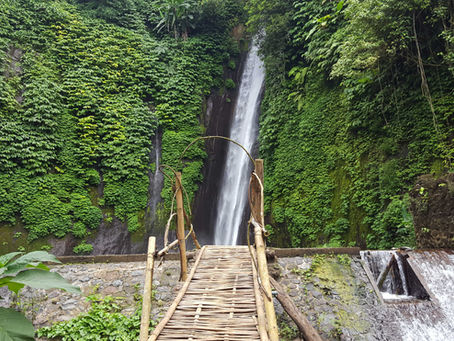top of page

GLOBAL SHANANIGANS

Search


Munduk Waterfall
Flowing through Bali’s northern highlands, Munduk Waterfall is more than a natural wonder. Surrounded by forests, clove plantations and jungle cliffs, it is a sacred site where guardian spirits dwell and restless souls are said to linger. Visitors come not only for its refreshing pools but to feel the ancient energy that makes the place alive, watchful and transformative.
Shannon


The Telaga Waja River
The Telaga Waja River, flowing down the verdant slopes of Mount Agung in East Bali, is best known today for its rafting adventures but beneath its rushing waters lies a deep, often overlooked historical and cultural undercurrent. Historically, this river has served as both a geographical and spiritual artery for the people of Karangasem. It provides water for rice fields through a traditional irrigation system called subak and many Balinese believe it to be sacred.
Shannon


Ulu Petanu Waterfall
Tucked deep within Tegallalang village, Ulu Petanu Waterfall offers a peaceful, intimate retreat far from Bali’s busy tourist spots, where crystal-clear waters cascade gently amid dense jungle. Steeped in legend, it is also known as the sacred site linked to King Mayadenawa, whose blood is said to have cursed the nearby river, making the waterfall a place of spiritual cleansing and reverence.
Shannon


Ayung River Rafting - Bali's Scenic Waterway
The Ayung River is Bali’s longest waterway, stretching 68.5 km's from the lush northern highlands down to the southern coast at Sanur. It snakes its way through deep gorges, remote jungles, rice terraces and traditional villages, making it one of the island’s most scenic natural features. Despite its size, the Ayung maintains a gentle flow for much of its length, making it ideal for outdoor activities like rafting and river trekking.
Shannon


Cat Cat Village
Cat Cát Village lies in the misty mountains of northern Vietnam, known for its cascading waterfalls, terraced hillsides and narrow stone paths that wind through the valley. The landscape, shaped by water and cloud, gives the village a magical atmosphere that draws travellers seeking both beauty and stillness.
Shannon


Furong Ancient Waterfall Town - The Widow's Veil
Originally known as Wangcun, this stunning 2000 year old village began as a sleepy Tujia ethnic settlement, nestled deep within the rugged cliffs of western Hunan Province. Established during the Han Dynasty, it was once little more than a modest cluster of wooden dwellings, with smoke curling gently from hearth fires and echoes of ancestral chants reverberating across the canyon.
Shannon


Kanto Lampo Waterfall
Shaped by both chance and design, one of Bali’s most unexpected natural wonders is Kanto Lampo Waterfall. Unlike the island’s ancient cascades that have poured down jungle cliffs for centuries, this waterfall is a relatively recent creation. In the early 2010s, adjustments to a local irrigation system redirected water across a rocky cliffside and over time the flow carved its way over volcanic stone, giving rise to the unique cascade we see today.
Shannon


Yangshuo County - A Journey Through History and Hills
Tucked deep within Guangxi’s dramatic karst terrain, Yangshuo's landscape is far more than a picturesque backdrop, it is steeped in spiritual and supernatural significance. For centuries, locals have believed the towering limestone peaks to be the resting places of ancient spirits, with many formations given mythological names and stories. One of the most iconic is Moon Hill, named for its crescent shaped cave, which legend says was created by a celestial blade slicing throug
Shannon


Carved in Time - Khuổi Ky Stone Village
Known for its striking stone architecture and deeply rooted cultural traditions, Khuổi Ky’s origins trace back over 400 years and was established by the ancient Tay ethnic tribe, after 2,000 years of hardship and migration from the southern regions of China and Cambodia. The Tay people, one of Vietnam’s oldest and most culturally rich ethnic groups, are believed to have journeyed across generations, seeking fertile land and spiritual sanctuary.
Shannon


Bản Giốc Waterfalls
Carved by the Quây Sơn River, this magnificent tiered waterfall spans about 300 metres in width and cascades down 30 meters, making it the largest natural falls in Southeast Asia and the fourth largest transboundary waterfall in the world. Located on a remote border between Vietnam’s Cao Bằng Province and China’s Guangxi region, the Bản Giốc Waterfall (known as the Detian Falls in China) is one of Asia’s most spectacular natural wonders, rivalling Plitvice in Croatia.
Shannon
bottom of page